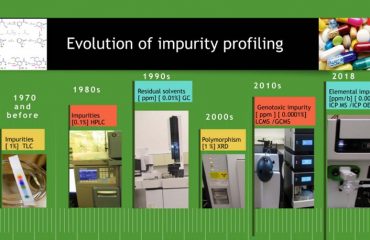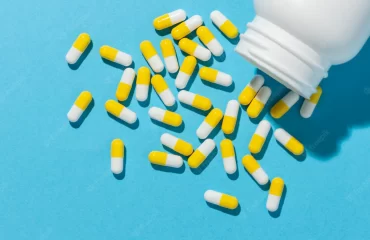
Overview
Patient safety is the primary objective of the Pharmaceutical Quality System (PQS), Manufacturing Authorization holder is required to manufacture safe and effective medicinal products in accordance with the Marketing Authorisation. To ensure this, the PQS is utilized.
Adequate resources (locations, equipment, and employees), a sound quality policy with appropriate quality targets, and documentation of all processes in the form of instructions and records are all important. To assure the PQS efficacy and continual environment, various tools are utilized, including the processes for deviation management, change management, complaint management, and CAPA management. Additionally, self-inspections and audits are carried out, the PQR and management review are utilized. Quality Risk Management (QRM) and knowledge are two others important PQS elements.
In the planning, implementation, and continual improvement of the PQS, (senior) management takes the lead. The description of the quality policy, as well as the determination of quality objectives, the allocation of adequate resources, the definition of tasks and responsibilities, the promotion of communication, and the implementation of the management review, are all important management jobs. The instructions and records of the PQS are used to monitor and verify the quality-related processes that take place throughout the manufacturing of the pharmaceutical product, ensuring that regulatory requirements are met.
1. The aim and basic principles of the PQS
Every sick person who takes a medication hopes that it works and heals the symptom or at the very least relieves the symptoms. However, the 1937 Elixir Sulfanilamide incident in the USA, which resulted in the deaths of 107 patients, and the Thalidomide tragedy in Germany at the start of the 1960s made it clear that one thing is more important: medicinal products must be safe. This is why patient safety is the primary objective of the pharmaceutical quality system (PQS). All holders of a Manufacturing Authorisation must guarantee that Chapter 1 of the EU GMP Guidelines is followed, the manufactured medicinal products
- are fit for their intended use,
- conform with Marketing Authorisation or Clinical Trial Authorisation standards,
- and do not put patients at risk owing to insufficient safety, quality, or efficacy
To achieve this objective, a variety of parties with distinct responsibilities collaborate with the pharmaceutical corporation, drug regulatory authorities, and supervisory authorities. Before applying to the relevant authorities for a Marketing Authorisation, the pharmaceutical corporation guarantees that the medicinal product satisfies the quality requirement throughout development. Before making a judgment, the regulatory authority reviews the application. The Marketing Authorisation, if successful, establishes the framework for all further activities. According to the authorities, patient safety is ensured (only) when the medicinal product is manufactured and tested in conformity with the requirements of the Marketing Authorisation. Only products that satisfy this requirement are allowed to be placed on the market. If changes to the Marketing Authorisation are made, the authorities must be notified, and the changes must be approved if required. The third-party involved is the supervisory authority. They inspect the medicinal product manufacturer on a regular basis to ensure that they are complying with the Marketing Authorisation and GMP/GDP. The interaction between these parties is illustrated in Figure 1.

2. Quality policy and quality objectives
The requirement that the pharmaceutical companies describe their quality policy originates from ICH Q10. The quality policy and quality objectives were added to the revised Chapter 2 of the EU GMP Guidelines in February 2014 and are now an integral part of the PQS.
ICH Q10 requirements with regard to quality policy:
- Senior management should establish a quality policy that describes the overall intentions and direction of the company related to quality.
- The quality policy should include an expectation to comply with applicable regulatory requirements and should facilitate continual improvement of the pharmaceutical quality system.
- The quality policy should be communicated to and understood by personnel at all levels in the company
- The quality policy should be reviewed periodically for continuing effectiveness
Part III of the EU GMP Guidelines now contains ICH Q10, which includes three major quality objectives:
- Product Realisation: The PQS should allow the manufacture of products with quality attributes that meet the needs of patients, health care professionals and the regulatory authorities.
- State of Control: The manufacturer should establish effective monitoring and control systems in order to provide assurance of the continued suitability and capability of the processes.
- Continual Improvement: Because “stagnation means regression”, the manufacturer is obliged to identify and implement areas for improvement with regard to company products, processes and systems using current sources of knowledge.
3. PQS tools
In order to achieve quality objectives, the following elements of the PQS are of central importance (see also Figure 2):
- quality policy and quality planning
- documentation
- a large selection of tools
- suitable and adequate resources, i.e., premises, facilities, equipment, and personnel

A number of effective tools are available for implementing, maintaining, and monitoring the PQS:
- Quality risk management
- Change management
- Deviation management
- Management of complaints and recalls
- CAPA management
- Self-inspections
- Supplier qualification and audits
- Knowledge management
- Product quality review
- Management review
The continual improvement process (CIP) is also known as a helpful tool. However, each organization should carefully consider if a distinct CIP process is required, as the objective of the above-mentioned tools is to continual improvement of the PQS and its processes. The quality policy expresses the commitment to continual improvement, and the above-mentioned PQS tools may be used to successfully achieve continual improvement.
4. References
- EU-GMP guideline, Part I, Chapter 1 “Pharmaceutical Quality System”
- ICH Q10 Pharmaceutical Quality System
- GMP – Verlag, Chapter 1 “Quality Management System”




